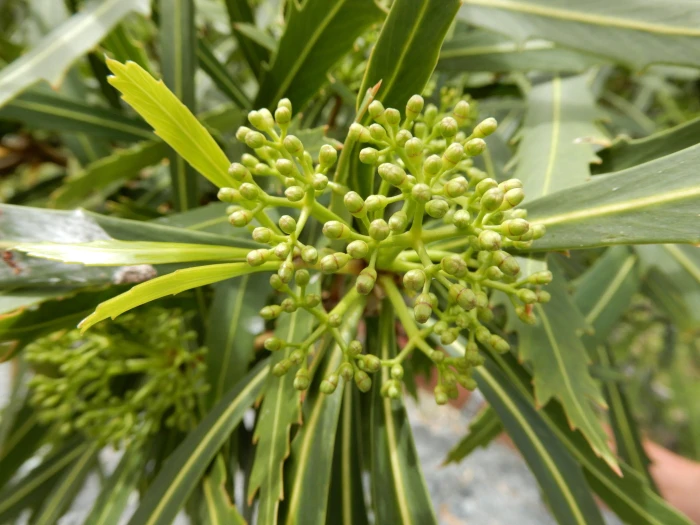Horoeka
(Pseudopanax crassifolius)
Horoeka (Pseudopanax crassifolius)
/
/

Kate McAlpine
CC BY 4.0
Image By:
Kate McAlpine
Recorded By:
Copyright:
CC BY 4.0
Copyright Notice:
Photo by: Kate McAlpine | License Type: CC BY 4.0 | License URL: http://creativecommons.org/licenses/by/4.0/ | Rights Holder: Kate McAlpine | Publisher: iNaturalist | Date Created: 2020-12-17T13:55:25-08:00 |

























































Estimated Native Range
Climate Requirements for Fresno, Texas
| This Plant | Your Site | Plant Suitability for Your Location | ||
|---|---|---|---|---|
| • Precipitation | 22" - 404" | 48" | Aquatic | Aquatic |
| • High Temp. | 58°F - 78°F | 92°F | Your summers may be too hot for this plant. | Too hot |
| • Low Temp. | 21°F - 53°F | 42°F | Your winter temperatures are normal for this plant | Excellent |
This plant should grow well at your location with about N inches per year (Y minutes per month) of irrigation.
Summary
Pseudopanax crassifolius, commonly known as horoeka or lancewood, is a New Zealand native tree found in lowland and montane forests. It is a distinctive plant with a dramatic change in form from juvenile to adult. The juvenile form, which can persist for 15 to 20 years, features long, narrow, downward-hanging leaves that are stiff, leathery, and dark green with a prominent central rib. They are about 1 cm wide and can reach up to 1 m in length with irregular teeth. As the tree matures, it develops a more traditional tree shape with a height of 12-16 feet (3.6-4.8 meters) and a width of 6-15 feet (1.8-4.5 meters). The adult leaves are shorter, wider, and more rounded. Lancewood produces inconspicuous green and white flowers in the summer, followed by purple-black berries that are attractive to birds.
In cultivation, horoeka is valued for its unique juvenile form, making it an interesting focal point in gardens. It is adaptable to a range of conditions but prefers full sun to part shade, medium water, and well-drained soils. It is used for its architectural qualities in urban and residential landscapes, and its tolerance of wind makes it suitable for coastal planting. While generally low-maintenance, it can be susceptible to root rot in poorly drained soils. Gardeners should be aware that the juvenile form will eventually transition to the adult form, which has a different appearance.CC BY-SA 4.0
In cultivation, horoeka is valued for its unique juvenile form, making it an interesting focal point in gardens. It is adaptable to a range of conditions but prefers full sun to part shade, medium water, and well-drained soils. It is used for its architectural qualities in urban and residential landscapes, and its tolerance of wind makes it suitable for coastal planting. While generally low-maintenance, it can be susceptible to root rot in poorly drained soils. Gardeners should be aware that the juvenile form will eventually transition to the adult form, which has a different appearance.CC BY-SA 4.0
Plant Description
- Plant Type: Tree
- Height: 12-16 feet
- Width: 6-15 feet
- Growth Rate: Moderate
- Flower Color: Green, White
- Flowering Season: Summer
- Leaf Retention: Evergreen
Growth Requirements
- Sun: Full Sun, Part Shade
- Water: Medium
- Drainage: Medium
Common Uses
Low Maintenance, Potted Plant, Rock Garden, Street Planting
Natural Habitat
Native to lowland and montane forests in New Zealand
Other Names
Common Names: Horoeka
Scientific Names: Pseudopanax crassifolius, Panax crassifolius, Pseudopanax crassifolius var. trifoliolatus, Panax pentadactylon, Aralia crassifolia, Panax longissimus, Pseudopanax crassifolius var. unifoliatus, Aralia quinquevulnera, Aralia trifoliata
GBIF Accepted Name: Pseudopanax crassifolius (Sol. ex A.Cunn.) K.Koch